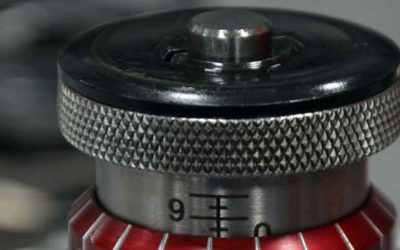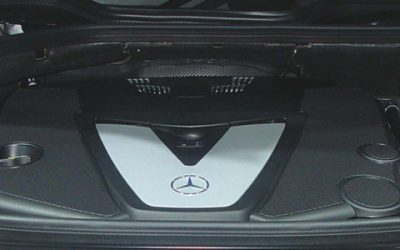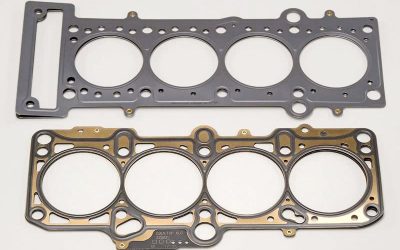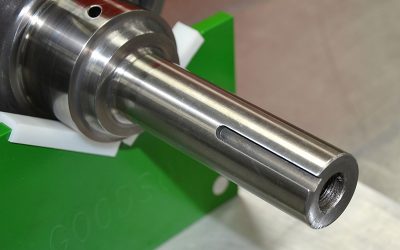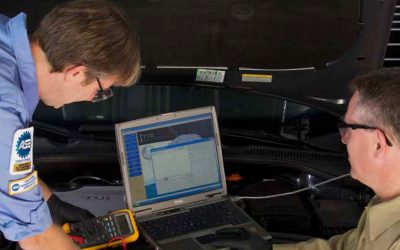High-Performance Brake Basics: Calipers
There’s a whole lot of tech involved in high-performance brake systems, and here we’ll start off our ongoing series on the subject with the parts that pinch the pads.
So You Want to Drive on a Race Track? Surprise! It’s easier than you think
Race track owners and managers are finding, in increasing numbers, that there is a growing interest in driving fast, thanks in no small part to the dramatic growth of interest in NASCAR racing. The result, in many cases, is that track owners and managers are making their facilities available to folks who have never driven in competition, or even at speed, let alone on a race track. So, increasingly, track owners are scheduling “track days†which afford an opportunity to drive at speed, in our own cars, for those who may never have done so.
StarTuned December 2013
In this issue:Â Narrowing the Range of Temperatures with the E-Thermostat; Mercedes-Benz CDI Diesels: No More Knocking, Smoking, or Stinking; Meet the CLA, Model Series 117;Â FWD and MacPherson Struts Change the Collision Repair Game
Tools, Tools and More Tools, for Building High-Performance Engines, Part 1
Whether you call it biting the bullet, or making the commitment, if you’re going to build high-performance engines you’re going to have to invest in tools.
Wandering Fulminations on High-Performance …And, the Saga Continues
As promised, the tale of the little Torino that could and the Ciera that couldn’t continues — please bear in mind that a lot of time and miles have passed since the events described herein, and some facts may be lost to the sands of time. The story, however, is as true as I can render it after forty years.
FWD and MacPherson Struts Change the Collision Repair Game
Many advanced steering, stability control, and propulsion technologies in the front-drive CLA depend upon precise suspension geometry for proper vehicle operation. Here are some front wheel drive suspension basics for collision repairers who will be working on this history-making model.
HOT ROD Professional December 2013
Where did the term “hot rod†come from, anyway? One etymological theory for its source holds that a “rod†was a nickname for a camshaft, while another says it came from “hot roadster.â€
Meet the CLA, Model Series 117
Big news from Mercedes-Benz! Not only front wheel drive and MacPherson struts, but also a host of other departures that prove the superiority of the company’s forward-thinking engineering.
Mercedes-Benz CDI Diesels: No More Knocking, Smoking, or Stinking
Unstable fossil-fuel markets, customer environmental awareness, and government regulations have all contributed to automobile manufacturers searching for the silver bullet for mpg. Mercedes-Benz has looked to its long diesel engine history, and added a huge dose of new technology.
Narrowing the Range of Temperatures with the E-Thermostat
In order to maintain emissions compliance, Mercedes-Benz engineers have to control the temperature range the engine will operate in and develop engine management parameters within this range. This may sound simple enough, but how do you accomplish this when the car might sit for an hour of traffic on a hot summer day, or cruise at highway speeds in the dead of winter?
Boosting Horsepower with a Turbocharger, Part 1
What a concept! The idea may be a century old, but it can still make a small engine put out like a big one. This two-part series will prepare you for high-performance modifications with information on operating principles, design fundamentals, diagnostic info, and replacement and upgrade alternatives.
The Henry Ford Museum, Part 2
In the first installment of our Weekend Warrior column on The Henry Ford, we explained the essence of this fabled institution just outside of Detroit. Tracing its heritage to the late 1920’s, The Henry Ford is actually five attractions all rolled up into one, and attracts as many as a million visitors each year.
Multi-Layer Steel: The “Forever” Head Gasket?
Bill McKnight dispels any misconceptions you may have about multi-layer steel gaskets. This tough, high-precision type of gasket makes the old composite variety look downright primitive.
Checking the Crankshaft
We’ll cover the highlights of crankshaft design and then we’ll discuss all the things you need to check before you load it in the block for the first time.
SEMA For Real Car Guys (and Gals)
The companies that founded SEMA were started by people who loved cars and trucks and turned their hobby into a career. Most people in the industry today still feel this way. That’s one of the things that makes SEMA and its members unique.
HOT ROD Professional October 2013
Providing our readers (professional auto service technicians who engage in high-performance pursuits) with more helpful and interesting information than they’ll find anywhere else.
Supplying Gasoline From the Fuel Pump Forward
The fuel supply system of any vehicle must be designed to deliver an adequate volume of fuel at the correct pressure to the carburetor(s) or fuel injectors during every operating condition at which the engine will be ever operated. If all this isn’t handled properly, the air/fuel mixture will shift lean or rich and cause performance to suffer.
Don’t TREAD On Me: Tire Pressure Monitor Systems
In 2000, the U.S. government responded to serious issues related to automobile tire safety with the TREAD (Transportation Recall Enhancement Accountability and Documentation) Act. This mandated that an elaborate computer-controlled system had to be added to every passenger vehicle to monitor tire pressures. It’s our job to keep these systems up and running.
Advanced BMW Parasitic Battery Draw Diagnostics
Whether you call them draws or drains, tracking them down isn’t as easy as it once was. These procedures and tools will help.
Opportunity Knocks
Being a Nissan Certified Collision Repair Network facility can boost your business.
BMW Mechatronic Transmission – Knowing the Do’s and Don’ts
BMW has always been a company that leads the way with technological advancements. One important development was the Mechatronic transmission. It’s been installed in many models, so we need to be more familiar with its do’s and don’ts.





